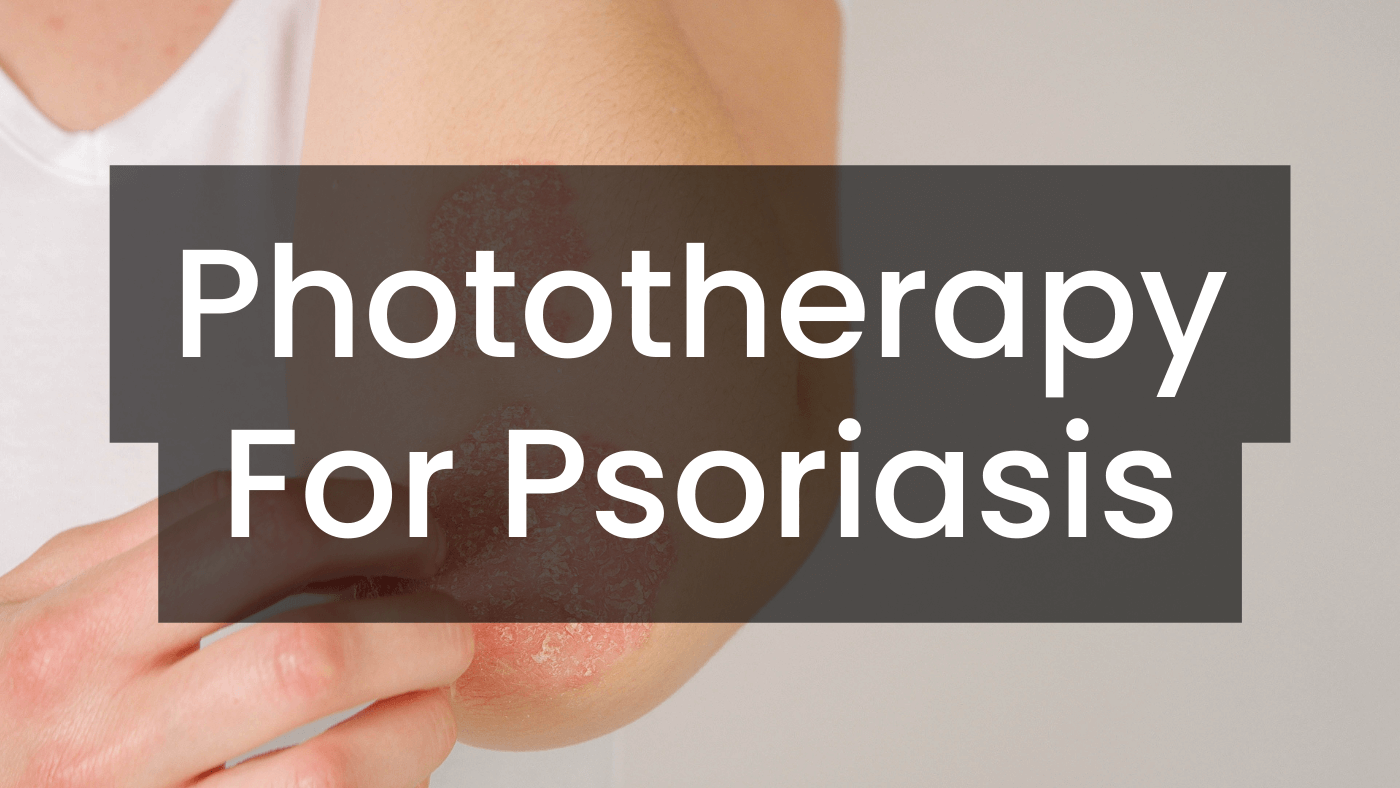Phototherapy for Psoriasis

Psoriasis is an autoimmune skin condition that impacts between one and four per cent of the western population (1). It is common for people with psoriasis to seek treatment as the condition can be painful and uncomfortable. One of the most popular and effective treatments for psoriasis is phototherapy.
What is phototherapy?
Phototherapy is the use of UV light for treating conditions including skin conditions like eczema, dermatitis and psoriasis. Ultraviolet light is made up of two different wavelengths - UVA and UVB. Narrow-band UVB phototherapy uses a small part of the UVB spectrum and can be safer than UVA phototherapy.
Phototherapy can be undertaken in outpatient facilities like hospitals or doctors' offices, or at home using portable phototherapy units.
What is psoriasis?
Psoriasis is a non-contagious, long-lasting autoimmune disease. Psoriasis is characterised by raised areas of red, pink or purple-coloured skin which are often dry, itchy and scaly.
Psoriasis can affect the whole body or may appear in localised patches. Psoriasis plaques commonly occur as small patches on the elbows, knees, back and scalp. Up to 90% of people with psoriasis have plaque psoriasis although there are other types including inverse psoriasis, erythrodermic psoriasis, guttate psoriasis and pustular psoriasis (2).
There appears to be a genetic component to psoriasis, which is triggered by environmental factors. Psoriasis flare-ups may occur more often in the winter months and may be triggered if you are on certain medications like beta blockers or NSAIDs.
Lifestyle factors like stress may also play a role in psoriasis onset and flare-ups, although more research is needed.
Despite there being no cure for psoriasis, there are many treatment options with a variety of effectiveness.
Treatment options may include topical agents like certain moisturisers and emollients, medications, dietary changes, lifestyle changes like stress reduction techniques as well as phototherapy.
Psoriasis is a non-contagious, long-lasting autoimmune disease. Psoriasis is characterised by raised areas of red, pink or purple-coloured skin which are often dry, itchy and scaly.
Psoriasis can affect the whole body or may appear in localised patches. Psoriasis plaques commonly occur as small patches on the elbows, knees, back and scalp. Up to 90% of people with psoriasis have plaque psoriasis although there are other types including inverse psoriasis, erythrodermic psoriasis, guttate psoriasis and pustular psoriasis (2).
There appears to be a genetic component to psoriasis, which is triggered by environmental factors. Psoriasis flare-ups may occur more often in the winter months and may be triggered if you are on certain medications like beta blockers or NSAIDs.
Lifestyle factors like stress may also play a role in psoriasis onset and flare-ups, although more research is needed.
Despite there being no cure for psoriasis, there are many treatment options with a variety of effectiveness.
Treatment options may include topical agents like certain moisturisers and emollients, medications, dietary changes, lifestyle changes like stress reduction techniques as well as phototherapy.
Can psoriasis be treated with phototherapy?
In short, yes! Phototherapy involves exposing the skin to ultraviolet light on a regular basis and is considered a second-line therapy for psoriasis treatment.
Both narrow-band ultraviolet B radiation (UVB) and psoralen with ultraviolet A radiation (PUVA) are used in psoriasis treatment. Although, narrow-band UVB is considered to be superior because of its lower risk of skin cancer compared to PUVA (3). Ultraviolet B (UVB) is naturally present in sunlight but can be replicated using UVB phototherapy units in outpatient units or at home.
Light therapy doesn’t necessarily cure psoriasis but can help manage the condition and improve quality of life. Phototherapy can reduce the size, appearance and itchiness of the psoriasis plaques on the skin. Psoriasis plaques may even clear up entirely.
Although more research is needed, UVB phototherapy appears to help psoriasis sufferers by stopping the overproduction of skin cells by damaging their DNA.
A systematic review and meta-analysis of 23 studies looking at the use of phototherapy for psoriasis found that UVB phototherapy has a 61% efficacy rate and is considered “very effective” (4).
Can I treat psoriasis with UVB phototherapy at home?
You can purchase home UVB phototherapy lamps for at-home use to treat psoriasis. Studies have found that home UVB phototherapy for psoriasis is cost-effective and equally effective (5).
A study comparing the results of home phototherapy treatments with hospital-based ones found that the Psoriasis Area and Severity index reduced at a significantly similar rate in both home and hospital-based treatments (6).
We offer a Derma UVB Narrowband Phototherapy Lamp for use at home for people with psoriasis which is medically certified and comes with full setup and treatment instructions.
How long does it take for UVB phototherapy to work for psoriasis?
The time it takes for UVB phototherapy to work for psoriasis depends on the individual.
Phototherapy treatment plans for psoriasis at home depend on your skin type, the severity of psoriasis and the sensitivity of your skin.
It is recommended to use UVB phototherapy as a treatment between three to five times per week for two to three months for the best results (7). Although, you may see improvement in your psoriasis sooner than this.
Also, remember to implement a minimum of 24 hours of downtime between treatments. This is essential to reduce side effects of phototherapy like redness or skin damage in the long term.
If your skin does clear up from phototherapy use, you may still want to maintain regular phototherapy sessions to keep psoriasis at bay.






Leave a comment